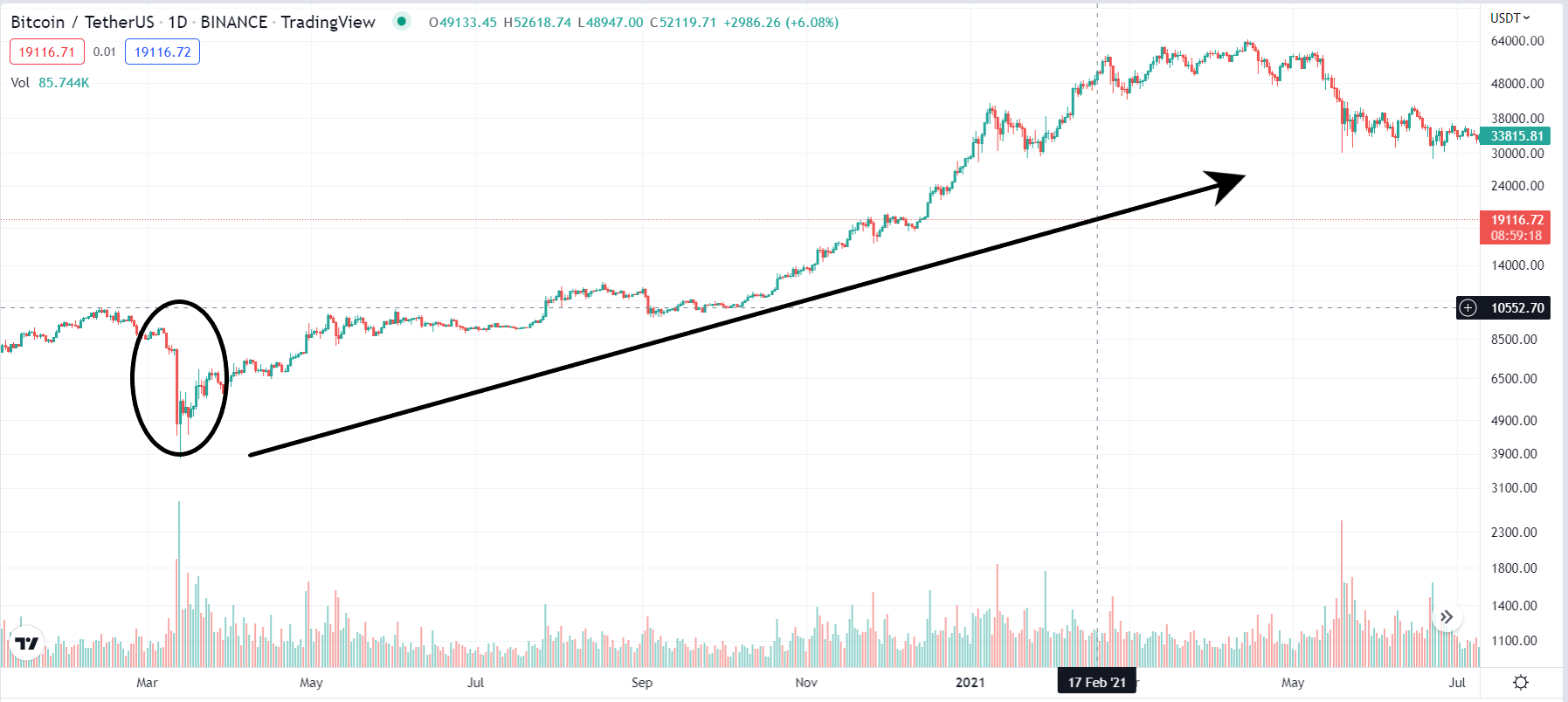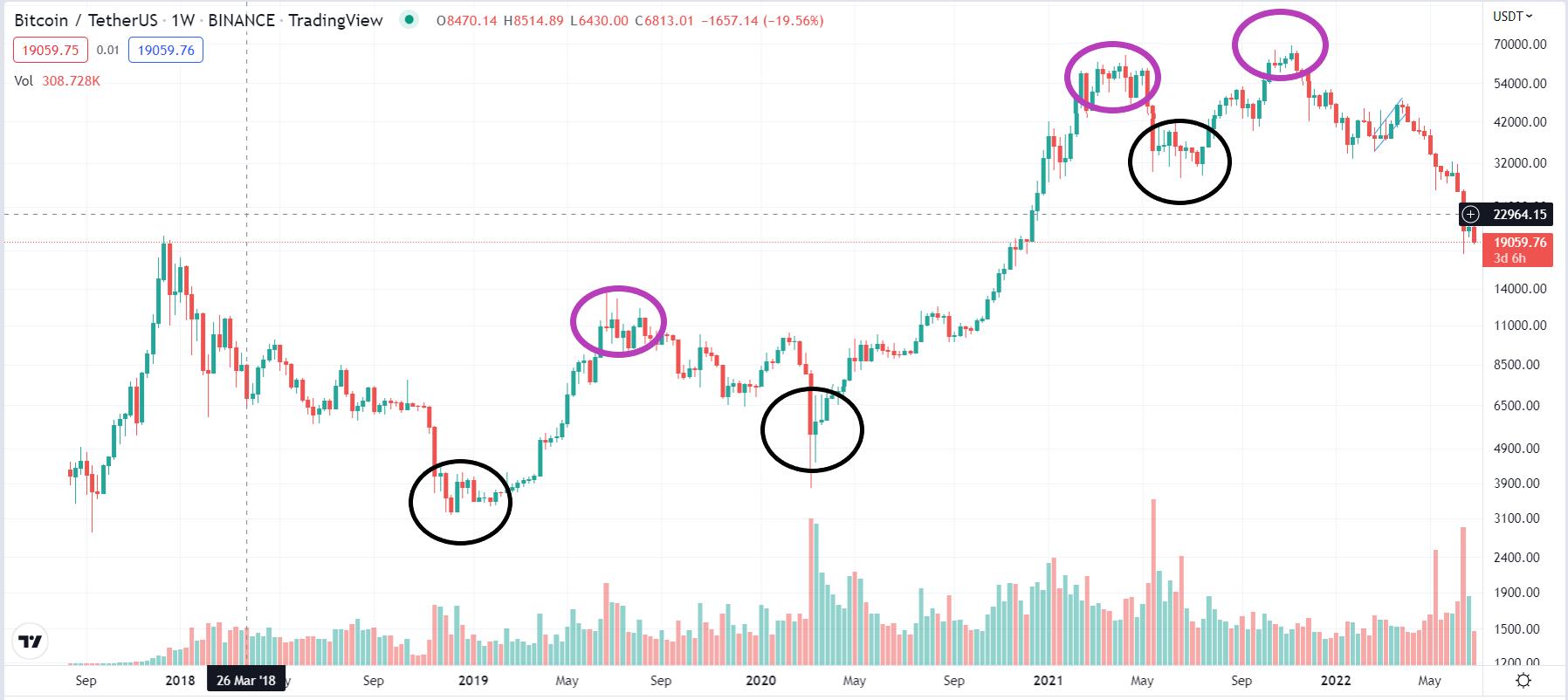Global Recession: What is the fate of the crypto market?
- A global recession looms - The crypto market isn’t immune to dips during financial crises - The crypto market will always bounce back, but some coins will be dead forever - DYOR; ensure you are investing in a token with actual utility.

When Satoshi Nakamoto developed Bitcoin after the global recession in 2008, he argued that governments and central banks’ irresponsible actions plunged the world into recession. Of course, this isn’t unfounded; the 2008 financial crisis was caused by government policies that facilitated deficient mortgage lending policies (subprime loans), allowing people who weren’t creditworthy the dream of buying a home. As a result, homeownership peaked without effort, and demand became inexistent.
Of course, in a free market, the effects of demand and supply will cancel out; hence, the low demand led to price crashes, and these homes (which were mostly not fully paid for) began to lose value. Interest rates began to rise while property value kept tanking, leaving people stuck with mortgages they couldn’t pay. People filed for bankruptcy, and the U.S. government began to make relentless efforts to find a solution to what it caused in the first place. Unfortunately, the financial sector suffered from it, and many banks and other financial institutions failed, leading to a terrible recession that spread like cancer to the rest of the world.
Looking back at many global financial crises in history, they can all be linked back to war or some government policy that plunged the world into chaos.
Bitcoin, The Solution?
Satoshi created Bitcoin as a borderless currency, not tied to any government or central bank’s policies. A peer-to-peer, decentralized currency is managed by the people and for the people. However, history has shown that Bitcoin and the entire cryptocurrency ecosystem aren’t immune to financial meltdowns.
During the COVID-19 global pandemic, all financial markets took hits, governments ran into debt, and the cryptocurrency market suffered a similar fate, with the index – Bitcoin losing 44% of its value on March 11, when WHO declared COVID-19 a global pandemic.
Companies were shut down for months, governments’ lost tax revenue, and still had to offer stimulus to retrenched citizens, as businesses couldn’t keep up with the sit-at-home order. Until today, some government economies are still recovering from the effects of the pandemic, which has left many currencies devalued.
However, for Bitcoin, this economic crisis didn’t last long; after the temporary loss in value, Bitcoin (and the crypto ecosystem) emerged on a sustained bull run that lasted for a year, helping people maintain value amid the devaluation of national currencies. Hence, many have attributed Bitcoin as a genuine global savior to devaluated global currencies.

According to a world bank press release earlier this month, the global economy is currently experiencing stagflation due to the war between Russia and Ukraine, just after the world is just recovering from the effects of the COVID-19 pandemic. As a result, the global economy is at a standstill and is expected to slump in 2023-2024.
If all analysis comes correct, it is evident that Bitcoin and the entire cryptocurrency ecosystem will undergo their first-ever recession this year. So, what are the chances of the cryptocurrency ecosystem surviving the crash and not facing devaluation for years like national currencies?
Analyzing Previous Bearish Runs
Far worse than the COVID-induced crypto dip, the cryptocurrency market has experienced several heavy bear runs, the latest of which currently sees Bitcoin down 72% from its All-time High in November. However, the peculiar thing about Bitcoin is that after every bearish run, it inevitably goes on a new bullish run that sets a new all-time high.

Unfortunately, many other cryptocurrencies dipped by 99% and are under the water for life. Every bear season, hundreds of cryptocurrencies die, thousands remain in stagnation, and the rest maintain their solvency.
So, What then?
Suppose the global economy slips into a recession next year as predicted. In that case, the crypto market will go further down, probably sending the market to the longest bearish run ever. However, the only bright light is that selling pressure will become exhausted at some point, and the market will be motivated into a new bullish run that could create a new All-time high for Bitcoin, probably at a unit price of over $100,000.
However, if this becomes the longest bearish run in history so far, many altcoins will die – even the seemingly strong ones. Hence, only a few coins are worth hodling in today’s market. Even the next-gen cryptocurrencies like Solana, Avalanche, and Luna – the famous ETH killers are down bad from their All-time high prices in November 2021.
Hence, in a global recession, the only coins worth holding are Bitcoin, Ethereum, and a couple of more next-gen coins with massive investment stakes; memecoins like Shiba Inu and Dogecoin with no real utility could plunge bad and never rise again. Hence, it is advisable to conduct detailed research into the technologies and roadmaps of each coin you hold to ensure that they can weather the storm.
Quick Recap
- A global recession looms
- The crypto market isn’t immune to dips during financial crises
- The crypto market will always bounce back, but some coins will be dead forever
- DYOR; ensure you are investing in a token with actual utility.
Do note, that all information above shouldn't be misconstrued as financial advise - they are mere speculations; you are advised to do your own research
For more beginner tips, as well as detailed guides on cryptocurrency and blockchain technology, do well to visit the CCTIP Blog and follow our social media communities: